Showing 111–120 of 1165 results
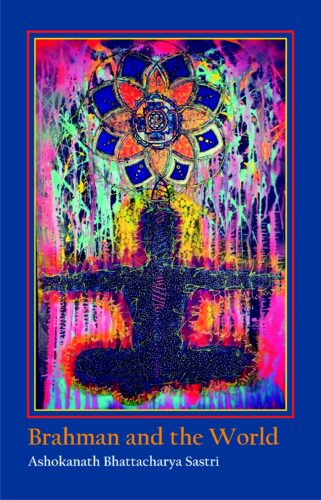
The Ved?nta has been rightly called the Finest Fruit of Indian Thought and the Upani?ads as the Finer Flowers. Ved?nta grows out of the teachings of the Upani?ads and passes into the various systems in the writings of ?a?kara, Bh?skara, R?m?nuja, Madhva and Vallabha, the great founders of Advaita, Bhed?bheda, Vi?i???dvaita, Dvait?dvaita and ?uddh?dvaita, respectively. However, there is a perception among Orientalists that while the Upani?ads favour the Monistic doctrine, B?dar?ya?as Brahmas?tra fundamentally opposes it on some of the most crucial points.
The book thus delves deep into the philosophies of both B?dar?ya?a and ?a?kara in enunciating the essential features of Brahman and Its association with the world. It thus discusses topics such as what sort of cause Brahman is?, and what sort of material causality is to be ascribed to It? It also addresses the conflicting views on the nature of Brahman like that of Vivarttav?da and of R?m?nujas Sagu?a-Brahman.
This book proposes to take up the question of Universal Causation to examine thoroughly as how far it is right to regard Brahman as the Universal Cause and how far s?trak?ra himself lent his support to each of the inter-conflicting schools of Ved?nta. This book should, therefore, benefit all who are devoted to the philosophic teachings of Advaita Ved?nta and its preceptors.
“The Vedānta has been rightly called the Finest Fruit of Indian Thought and the Upaniṣads as the Finer Flowers. Vedānta grows out of the teachings of the Upaniṣads and passes into the various systems in the writings of Śaṅkara, Bhāskara, Rāmānuja, Madhva and Vallabha, the great founders of Advaita, Bhedābheda, Viśiṣṭādvaita, Dvaitādvaita and Śuddhādvaita, respectively. However, there is a perception among Orientalists that while the Upaniṣads favour the Monistic doctrine, Bādarāyaṇa’s Brahmasūtra fundamentally opposes it on some of the most crucial points.
The book thus delves deep into the philosophies of both Bādarāyaṇa and Śaṅkara in enunciating the essential features of Brahman and Its association with the world. It thus discusses topics such as what sort of cause Brahman is?, and what sort of material causality is to be ascribed to It? It also addresses the conflicting views on the nature of Brahman like that of Vivarttavāda and of Rāmānuja’s Saguṇa-Brahman.
This book proposes to take up the question of Universal Causation to examine thoroughly as how far it is right to regard Brahman as the Universal Cause and how far sūtrakāra himself lent his support to each of the inter-conflicting schools of Vedānta. This book should, therefore, benefit all who are devoted to the philosophic teachings of Advaita Vedānta and its preceptors.”
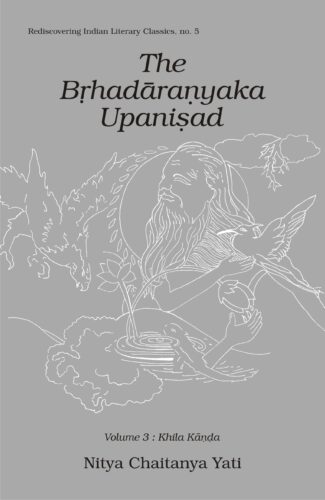
This dialectical narration of the Brhadaranyaka Upanisad will help the reader discover the ancient seers timeless insights to appreciate an integrated system of thought and experience what is real and enduring in his/her own essence.
The Brihadaranyaka Upanishad is one of the ten major Upanishads. A dialectical narration that unabashedly stands up to the rational scrutiny of the modern mind, it is directed towards both the individual aspirant caught up in the dark morass of confusion and the philosophic thinker in search of rare pearls of wisdom from humanitys treasury. Guru Nityas matchles commentary will enable the reader to discover the ancient seers timeles insights, to appreciate a fully-developed, integrated system of thought, and, most importantly, to learn to connect with what is real and enduring in his or her own essence. Schematically, the Brihadaranyaka Upanishad a brilliant discourse from the Yajur Veda is set out in three volumes, entitled: Madhu Kanda, Muni Kanda and Khila Kanda. In his planned three-volume thorough-going, meticulously analytical commentary. Guru Nitya distills the wisdom teaching of the Brihadaranyaka Upanishad, drawing on his intimate understanding of the human psyche, as well as both Eastern and Western philosophy, science, art and literature. Dwelling in turn on each of its 435 mantras, its poetic charm, myths, metaphors, images and symbols, Guru Nitya recreates and expands the Upanishadic vision of our own nature, human interaction, and the cosmos, and their relation to the unmoved essence of all. With highly useful appendices and a comprehensive index, the commentary will hold an enduring appeal for both scholars and discerning readers.

This dialectical narration of the Brhadaranyaka Upanisad will help the reader discover the ancient seers timeless insights to appreciate an integrated system of thought and experience what is real and enduring in his/her own essence.
The Brihadaranyaka Upanishad is one of the ten major Upanishads. A dialectical narration that unabashedly stands up to the rational scrutiny of the modern mind, it is directed towards both the individual aspirant caught up in the dark morass of confusion and the philosophic thinker in search of rare pearls of wisdom from humanitys treasury. Guru Nityas matchles commentary will enable the reader to discover the ancient seers timeles insights, to appreciate a fully-developed, integrated system of thought, and, most importantly, to learn to connect with what is real and enduring in his or her own essence. Schematically, the Brihadaranyaka Upanishad a brilliant discourse from the Yajur Veda is set out in three volumes, entitled: Madhu Kanda, Muni Kanda and Khila Kanda. In his planned three-volume thorough-going, meticulously analytical commentary. Guru Nitya distills the wisdom teaching of the Brihadaranyaka Upanishad, drawing on his intimate understanding of the human psyche, as well as both Eastern and Western philosophy, science, art and literature. Dwelling in turn on each of its 435 mantras, its poetic charm, myths, metaphors, images and symbols, Guru Nitya recreates and expands the Upanishadic vision of our own nature, human interaction, and the cosmos, and their relation to the unmoved essence of all. With highly useful appendices and a comprehensive index, the commentary will hold an enduring appeal for both scholars and discerning readers.

This dialectical narration of the Brhadaranyaka Upanisad will help the reader discover the ancient seers timeless insights to appreciate an integrated system of thought and experience what is real and enduring in his/her own essence.
The Brihadaranyaka Upanishad is one of the ten major Upanishads. A dialectical narration that unabashedly stands up to the rational scrutiny of the modern mind, it is directed towards both the individual aspirant caught up in the dark morass of confusion and the philosophic thinker in search of rare pearls of wisdom from humanitys treasury. Guru Nityas matchles commentary will enable the reader to discover the ancient seers timeles insights, to appreciate a fully-developed, integrated system of thought, and, most importantly, to learn to connect with what is real and enduring in his or her own essence. Schematically, the Brihadaranyaka Upanishad a brilliant discourse from the Yajur Veda is set out in three volumes, entitled: Madhu Kanda, Muni Kanda and Khila Kanda. In his planned three-volume thorough-going, meticulously analytical commentary. Guru Nitya distills the wisdom teaching of the Brihadaranyaka Upanishad, drawing on his intimate understanding of the human psyche, as well as both Eastern and Western philosophy, science, art and literature. Dwelling in turn on each of its 435 mantras, its poetic charm, myths, metaphors, images and symbols, Guru Nitya recreates and expands the Upanishadic vision of our own nature, human interaction, and the cosmos, and their relation to the unmoved essence of all. With highly useful appendices and a comprehensive index, the commentary will hold an enduring appeal for both scholars and discerning readers.

This dialectical narration of the Brhadaranyaka Upanisad will help the reader discover the ancient seers’ timeless insights to appreciate an integrated system of thought and experience what is real and enduring in his/her own essence.
The Brihadaranyaka Upanishad is one of the ten major Upanishads. A dialectical narration that unabashedly stands up to the rational scrutiny of the modern mind, it is directed towards both the individual aspirant caught up in the dark morass of confusion and the philosophic thinker in search of rare pearls of wisdom from humanity’s treasury. Guru Nitya’s matchles commentary will enable the reader to discover the ancient seer’s timeles insights, to appreciate a fully-developed, integrated system of thought, and, most importantly, to learn to connect with what is real and enduring in his or her own essence. Schematically, the Brihadaranyaka Upanishad — a brilliant discourse from the Yajur Veda — is set out in three volumes, entitled: Madhu Kanda, Muni Kanda and Khila Kanda. In his planned three-volume thorough-going, meticulously analytical commentary. Guru Nitya distills the wisdom teaching of the Brihadaranyaka Upanishad, drawing on his intimate understanding of the human psyche, as well as both Eastern and Western philosophy, science, art and literature. Dwelling in turn on each of its 435 mantras, its poetic charm, myths, metaphors, images and symbols, Guru Nitya recreates and expands the Upanishadic vision of our own nature, human interaction, and the cosmos, and their relation to the unmoved essence of all. With highly useful appendices and a comprehensive index, the commentary will hold an enduring appeal for both scholars and discerning readers.
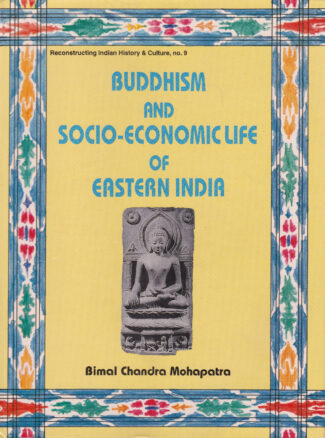
This book is the first-ever effort to gauge Buddhisms impact on socio-economic life under the Palas in Bengal and the Bhaumakaras of Orissa.
With the revival of Brahmanical Hinduism sometime around the fifth century ad, Buddhism had been dying out in India. But, paradoxically perhaps, in Bengal and Orissa, it saw not only its resurgence, but also a spell of its climactic glory for the rulers of these Eastern Indian regions, during eighth-twelfth centuries, were the devout adherents of Buddhist faith. At the secular layers, the Eastern Indian society of the times, as elsewhere in the subcontinent, was going through a period or transition: from the ancient to medieval. This book looks at the status of Buddhism in Bengal, Orissa, and their peripheral regions in Eastern India during 8th-12th centuries ad. Yet, more significantly, it is the first ever effort to gauge the impact of Buddhism on contemporary socio-economic life, ruled by the dynastic families of zealous Buddhists, namely, the Palas in Bengal (ad 750-1199) and the Bhaumakaras of Orissa (ad 756-c.950). Contextually, Dr. Mohapatra evolves indepth, analytical perspectives on pre-medieval religion, society and economy in Eastern India drawing on wide-ranging sources: both primary and secondary. Supported by relevant visual material, extensive bibliographic references, and a glossary of non-English words, the book is invaluable to the students/specialists of Buddhist studies and Indian history.

It explores the art and concept of performance in varied Buddhist traditions Chinese, Japanese, Sri Lankan and others. It explains theatrical performances representing Hinayana, Mahayana and Vajrayana cultures, with extensive endnotes and bibliographical references.
Professor George has ventured into a comparatively unchartered area seeking, as he does, to explore the art and concept of performance in Buddhism more specially in the context of Buddhist meditation and theatre. Spelling out the epistemology of performance in all its different connotations and definitional nuances, his study opens out an astonishingly vast panorama of the Buddhist theatrical practices in Sri Lanka, China, Japan, Nepal, Tibet . . . and goes on to demonstrate how, within this panorama, three kinds of theatrical practice can be identified, each corresponding to one of the three paths open to a Buddhist: the karma path, the Bodhisattva option, and enlightenment, and each representative of one of the three main cultures of Buddhism the Hinayana, Mahayana, Vajrayana. Supported by extensive endnotes and bibliographic references, Dr. Georges book also carries a range of case studies of the art of performance in Buddhism, with definitive examples, among others, of the Sri Lankan Kandy dance and Karma drama, Tibetan Chams and Chod, and Japanese Noh. Buddhism as/in Performance is a commendable piece of painstaking research, presented in a jargonless, compellingly readable style. It is certainly a pre-eminent contribution to drama studies, particularly of Buddhist theatrical practices.
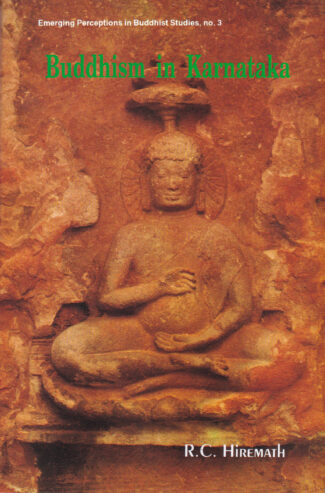
The book describes the organisation of the Buddhist centres in Karnataka, assesses the standing of Buddhism as a living, important religion prevalent there and accounts for its decay and departure to other countries.
Dr. R.C. Hiremath examines the age-old story of Siddhartha Gautamas early life and renunciation, providing the reader with the background of the Shramana schools that did not accept the authority of the Vedas. He treats, with meticulous scholarship, the Hinayana and Mahayana forms of Buddhism, and establishes that, contrary to popular belief, these two forms were not antagonistic to each other. The author maintains that Buddhism had in fact entered Karnataka before the time of the Emperor Ashoka, and that it enjoyed its heyday between the third century BC. and the third century AD. He describes the organisation of the centres, assesses the standing of Buddhism as a living important religion of Karnataka, and accounts for its decay and departure to countries outside the land of its birth. He discusses the impact of the religion on the literature of Karnataka, of which little, that is authentic, is yet known. Based on the Ashokan edicts found in the region, which are claimed to have been the first writings in Karnataka, Dr. Hiremath goes further to infer that the Kannada script and literature have been derived from Buddhistic literature and philosophy. Supported with reports of archaeological excavations and foreign travellers, the study gives a fresh insight on an hitherto untapped area. With highly informative appendix giving Devanagari text, Roman transliteration and translation of the inscriptions found in Karnataka, extensive bibliographic references, and a glossary of non-English words/phrases, the book holds out an enduring appeal to both scholars and discerning readers.

The book is a comprehensive study of the evolution and development of Buddhist visual art in India and Sri Lanka, taking into consideration their diverse forms and the impact of regional trends on them. It examines architecture, sculpture, painting, and use of symbols like the lotus and Sri Lanka devil masks.
The book is a comprehensive study of the evolution and development of Buddhist visual art in India and Sri Lanka, taking into consideration their diverse forms and the impact of regional trends on them. Consulting a number of original sources including scholarly works in the Sinhala language, Dr. Dabral highlights the salient features of ancient Buddhist art in the two countries with special attention to architecture, sculpture, painting, use of symbols like the lotus and Sri Lanka devil masks. Dr. Dabral emphasises how Sri Lankan Buddhist art though originally derived from Indian art, developed its own art forms on the basis of local conditions. The critical study evaluates Buddhist art under various rulers/empires such as the Mauryan empire, the Kushanas, the Nagas and the Guptas. With numerous plates and an extensive bibliography, it gives insights into important aspects like the architectural excellence of stupas and viharas, the Sigiriya frescoes, Ajanta and Bagh paintings, Mathura, Gandhara and Sarnath schools of art, and the Jatakas as reflected in carvings at Sanci, Amaravati and other places.
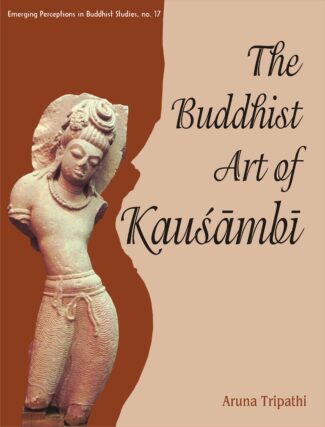
The book highlights the art treasures of Kosambi, a famous ancient centre of Buddhist art, through a study of over 300 stone sculptures, paying special attention to their iconographic features, the stone types, carving, grinding and polishing techniques and their aesthetic appeal. It discusses the uniqueness of Kosambi art as compared to Mathura and Sarnath schools.
The Upanishads capture the quintessence of Indian spiritual wisdom unfolding deepest, highly perceptive reflections on human existence and how it is related to the mysterious cosmos. Authored by enlightened seers over the period of 1500-200 bc., the Upanishadic message is a magnificent vision that raises human consciousness to sublime heights. One of the major centres of Buddhist art in ancient times, Kausambi provides evidence of an uninterrupted art tradition spanning centuries. Pointing to the scant attention Kausambi has received from scholars in the past, this work attempts to highlight its art treasures through a study of its stone sculptures. Based on scrutiny of stone sculptures found at various sites in Kausambi and its vicinity and housed in different museums, it presents perhaps the first extensive documentation of the Buddhist art of the region from the Mauryan to post-Gupta period. It examines in detail over 300 stone sculptures, paying special attention to their iconographic features, types of stone, techniques of carving, grinding and polishing and their aesthetic appeal. All this comes with a background throwing light on the history of Kausambi and its association with Buddhism, the early archaeological explorations in the region, and the individuality and uniqueness of Kausambi art as compared to Mathura and Sarnath schools. The book presents over 225 black-and-white and over 50 coloured photographs of Buddhist sculptures which are neatly classified and systematically analysed. It would prove invaluable to scholars and students of Buddhist art.
| There are no products |